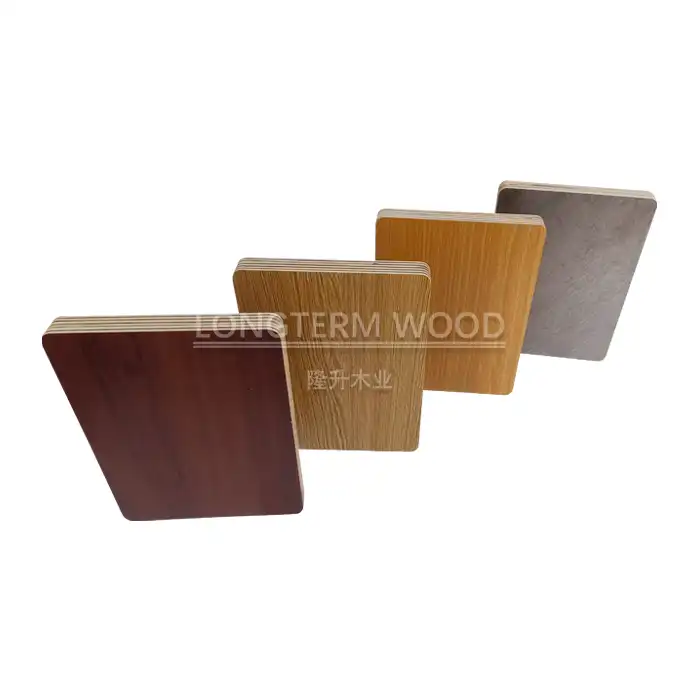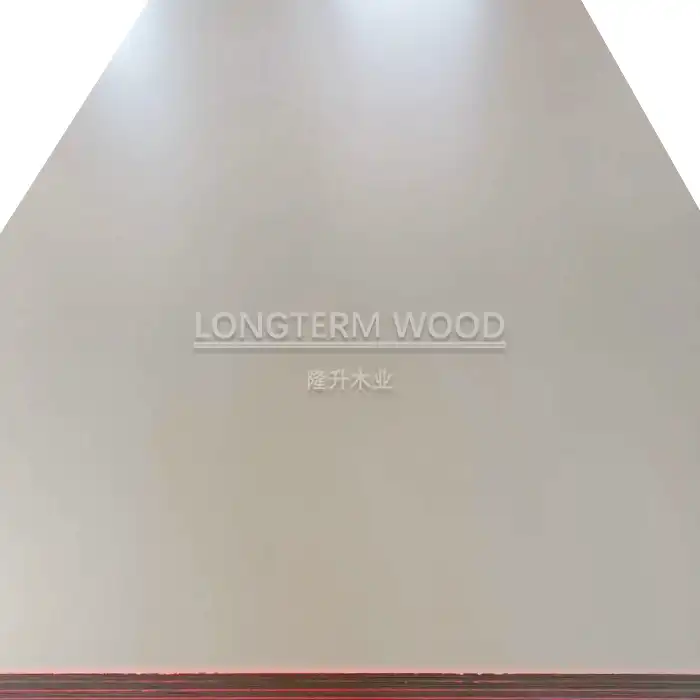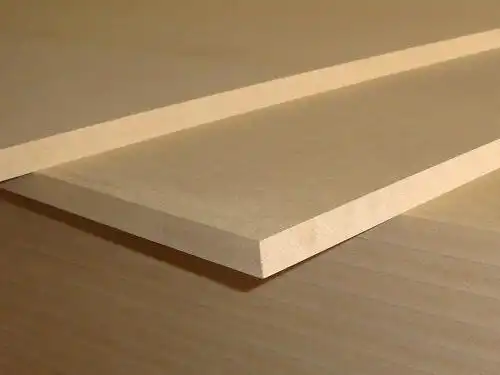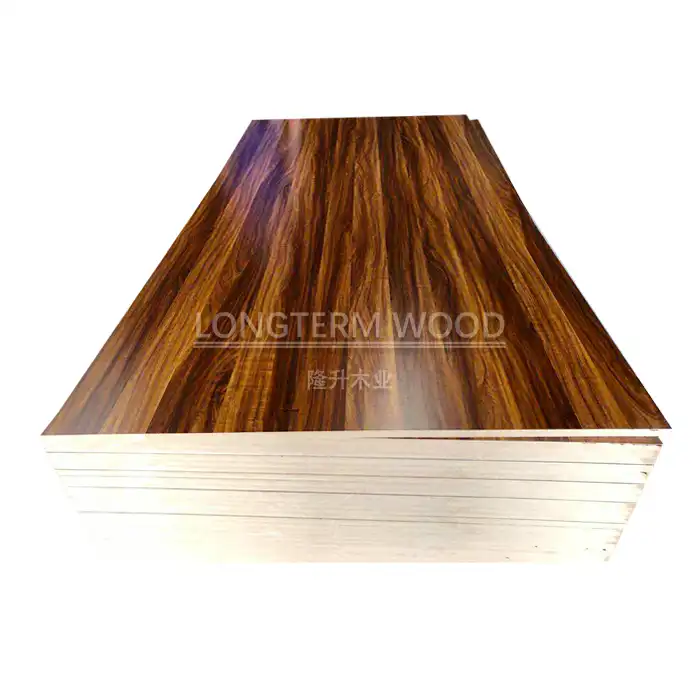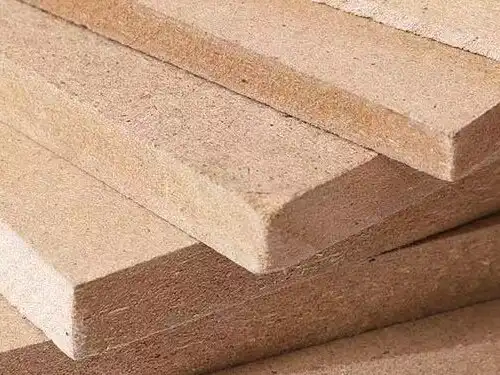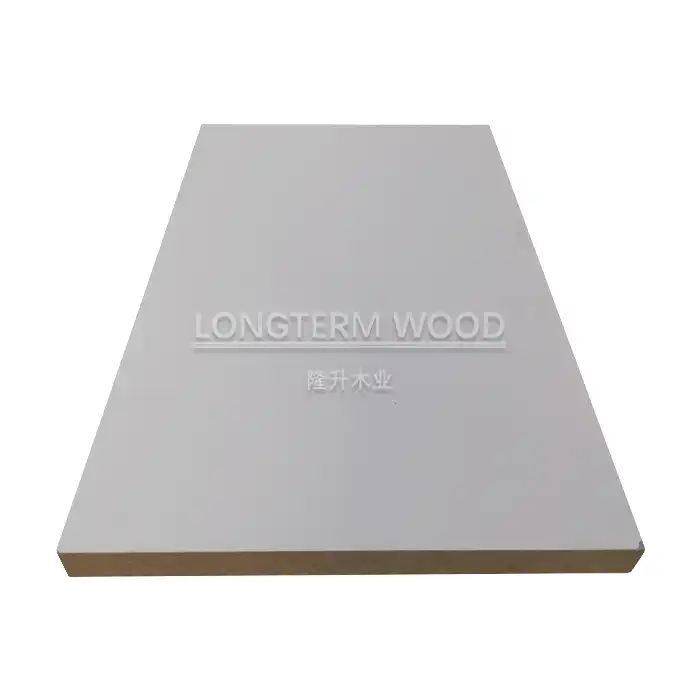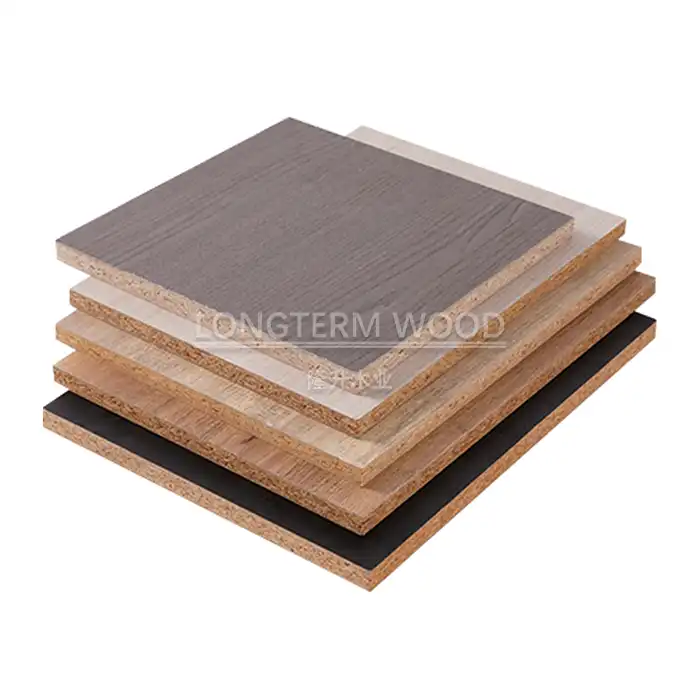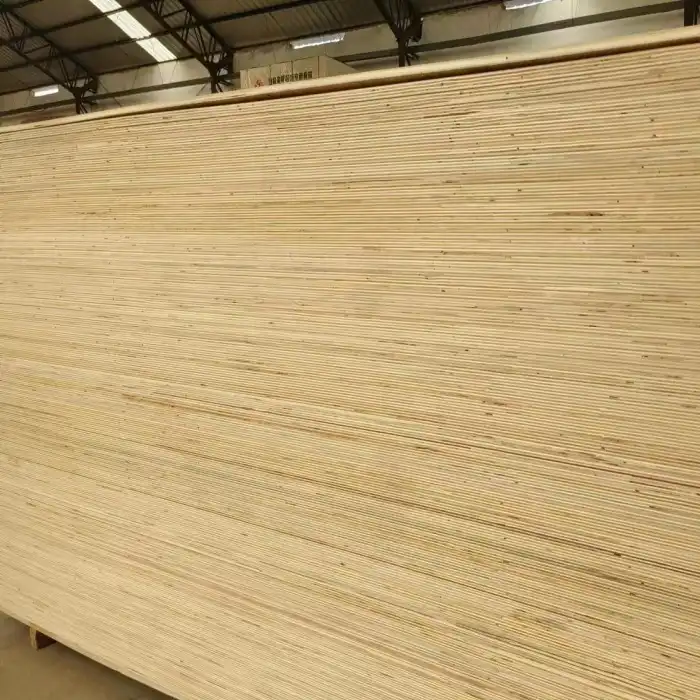
Is Melamine Plywood the Solution for Durable Office Furniture?
2025-05-13
In today's fast-paced corporate environment, office furniture needs to withstand constant use while maintaining its aesthetic appeal. Melamine plywood has emerged as a leading material in the commercial furniture industry, offering an impressive balance of durability, design versatility, and cost-effectiveness. But is melamine plywood truly the ideal solution for creating long-lasting, functional office furniture? This comprehensive analysis explores the properties, applications, and benefits of melamine plywood in office environments, examining why many furniture manufacturers and office designers increasingly turn to this versatile material for their projects.
The Fundamentals of Melamine Plywood for Office Applications
Understanding Melamine Plywood Construction
Melamine plywood represents a sophisticated engineered wood product that combines the structural strength of plywood with the protective qualities of melamine resin. The core structure consists of multiple layers of wood veneer bonded together with high-quality adhesives, creating a stable base with excellent dimensional stability. This core is then covered with melamine-impregnated paper, which is thermally fused to the surface under high pressure and temperature. This manufacturing process creates a seamless bond between the decorative melamine layer and the plywood substrate. The result is a highly durable board that resists moisture, scratches, and daily wear. Unlike traditional wood finishes that can chip or peel over time, melamine plywood's protective layer is integrated directly into the material structure, ensuring long-term performance even in high-traffic office environments. Manufacturers like Linyi Longterm Wood Industry Co, Ltd. enhance this durability by implementing rigorous quality control throughout the production process, inspecting each piece from veneer selection through final finishing.
Performance Characteristics That Benefit Office Environments
Melamine plywood offers exceptional performance characteristics that make it particularly suitable for office furniture applications. Its surface hardness significantly exceeds that of many natural wood products, providing superior resistance to impacts, scratches, and abrasions that commonly occur in busy office settings. The melamine surface also demonstrates impressive heat resistance, allowing it to withstand hot coffee cups and other warm items without developing marks or discoloration. Additionally, melamine plywood exhibits excellent dimensional stability, maintaining its shape and structure even with fluctuating humidity levels that can affect office environments with varying climate control situations. The non-porous surface prevents moisture absorption, which not only protects against water damage but also makes cleaning and maintenance remarkably straightforward—a significant advantage in office settings where hygiene and appearance must be maintained with minimal effort. These performance benefits explain why melamine plywood has become the material of choice for office furniture manufacturers who require consistent quality and long-term durability.
Cost-Benefit Analysis for Office Furniture Applications
When evaluating materials for office furniture investments, the cost-benefit ratio becomes a critical consideration for procurement managers and business owners. Melamine plywood presents a compelling value proposition by offering premium aesthetic qualities and performance characteristics at a significantly lower price point than solid wood alternatives. The initial investment in melamine plywood furniture typically ranges from 30-50% less than comparable solid wood options, while still providing professional appearance and durability. Over time, the economic advantages become even more apparent through reduced maintenance requirements and extended service life. Melamine plywood's resistance to wear means fewer replacements and repairs, substantially lowering the total cost of ownership over the furniture's lifecycle. For large-scale office installations, these savings can amount to significant budget preservation. Companies like Linyi Longterm Wood Industry Co, Ltd. enhance this value proposition further by offering competitive pricing without compromising on quality standards, allowing businesses to create professional office environments while maintaining fiscal responsibility. The combination of upfront affordability and long-term durability makes melamine plywood an economically sound choice for office furniture applications.
Designing Modern Office Spaces with Melamine Plywood
Aesthetic Versatility for Contemporary Workplaces
The visual adaptability of melamine plywood represents one of its most significant advantages in modern office design. Unlike materials limited to natural wood appearances, melamine plywood is available in an extensive range of colors, patterns, and surface finishes that can complement any office aesthetic from minimalist contemporary to traditional executive spaces. High-definition printing technologies allow melamine surfaces to convincingly replicate premium wood grains like walnut, oak, and mahogany, while also offering solid colors, abstract designs, and even custom branding elements. The surface options extend beyond visual considerations to include tactile experiences, with choices ranging from high-gloss finishes that create a sophisticated, polished appearance to textured surfaces that add dimension and warmth to office furnishings. This extraordinary design flexibility enables architects and interior designers to maintain visual continuity throughout office environments while adapting to different functional areas. Manufacturers like Linyi Longterm Wood Industry Co, Ltd. offer customizable options including PET and UV laminated finishes on their melamine plywood products, further expanding the creative possibilities for office design. The ability to precisely match corporate color schemes or create distinctive departmental identities makes melamine plywood an invaluable resource for branded office environments.
Ergonomic and Functional Design Possibilities
Melamine plywood offers exceptional versatility for creating ergonomically optimized office furniture that enhances employee comfort and productivity. The material's structural properties allow for precise manufacturing of ergonomic contours and support features that promote proper posture and reduce physical strain during extended work periods. Its excellent machinability enables furniture designers to incorporate curved edges, adjustable components, and integrated cable management systems that contribute to both user comfort and workspace functionality. Melamine plywood's consistent density and stability make it ideal for precision manufacturing of modular systems that can adapt to changing office layouts and individual user preferences. The material readily accommodates innovative design elements such as height-adjustable mechanisms, integrated technology ports, and collaborative workspace configurations that define modern office environments. Additionally, melamine plywood's lightweight nature compared to solid wood or metal alternatives makes reconfiguration of office spaces more manageable, allowing businesses to adapt quickly to evolving work patterns or organizational changes. With manufacturers like Linyi Longterm Wood Industry providing customizable specifications, office furniture designers can optimize their creations for specific functional requirements while maintaining aesthetic cohesion throughout the workspace.
Environmental Considerations in Office Design
In an era of increasing corporate environmental responsibility, melamine plywood offers significant sustainability advantages that align with green building standards and organizational sustainability goals. Progressive manufacturers like Linyi Longterm Wood Industry Co, Ltd. produce melamine plywood that meets strict environmental standards, including E1 and E0 formaldehyde-free classifications, ensuring minimal indoor air pollutants and creating healthier office environments. The manufacturing process typically utilizes wood from sustainable forestry practices, and the efficient use of resources in engineered wood products means more furniture can be produced from the same amount of timber compared to solid wood alternatives. The durability of melamine plywood extends furniture lifecycle, reducing the frequency of replacements and the associated resource consumption and waste generation. For offices pursuing LEED certification or other environmental building standards, properly sourced melamine plywood can contribute to credit achievements in materials and resources categories. The material's recyclability at end-of-life further enhances its environmental profile, as components can potentially be processed into other engineered wood products rather than entering landfills. By selecting melamine plywood from environmentally conscious manufacturers, companies demonstrate commitment to sustainability while creating aesthetically pleasing and functional workspaces.
Practical Considerations for Office Furniture Implementation
Durability and Maintenance in High-Traffic Areas
Office furniture must withstand constant use in environments where appearances matter and downtime for repairs is disruptive. Melamine plywood excels in these high-demand settings due to its exceptional resistance to the most common forms of furniture damage. The thermally fused melamine surface creates a protective barrier significantly more resistant to scratches, impacts, and abrasions than conventional wood finishes or veneers. This durability is particularly valuable in shared workspaces, conference rooms, and reception areas where furniture experiences frequent use by multiple individuals. The non-porous nature of melamine surfaces prevents staining from coffee spills, ink marks, and other common office contaminants. Daily maintenance requires only wiping with standard cleaning products, without the need for specialized polishes or treatments that natural wood surfaces often demand. This simplified maintenance regimen translates to lower ongoing costs and less disruptive cleaning schedules. Manufacturers like Linyi Longterm Wood Industry Co, Ltd. enhance these inherent durability advantages through rigorous quality control processes that ensure consistency throughout each production batch. Their inspection protocols at every manufacturing stage—from veneer selection through final finishing—guarantee that office furniture made from their melamine plywood maintains its appearance and structural integrity throughout years of daily use, minimizing replacement costs and maintaining professional office aesthetics.
Installation and Integration with Office Infrastructure
The practical implementation of office furniture systems requires consideration of installation efficiency and integration with existing infrastructure elements such as power, data, and HVAC systems. Melamine plywood offers significant advantages in this realm due to its precision manufacturing capabilities and adaptable properties. The material's dimensional stability and consistent thickness facilitate efficient assembly and installation, reducing downtime during office setups or reconfigurations. Furniture components manufactured from quality melamine plywood from suppliers like Linyi Longterm Wood Industry maintain their precise dimensions even after shipping and storage, ensuring that components align perfectly during assembly. The material's workability allows for easy on-site modifications when necessary to accommodate building irregularities or specialized equipment installations. Melamine plywood readily accepts hardware installations such as hinges, drawer slides, and connector systems, creating robust connections that maintain their integrity through years of use. The material's inherent electrical insulation properties also make it suitable for furniture that incorporates power and data connections, an increasingly important consideration in technology-driven office environments. Additionally, melamine surfaces can be easily cleaned after installation, eliminating the need for protective finishes or curing periods that delay occupancy. These practical advantages translate to smoother project implementations and faster returns to full operational capacity.
Long-term Value and Adaptability for Evolving Workplaces
The accelerating pace of workplace evolution demands furniture solutions that offer adaptability alongside long-term value. Melamine plywood furniture systems excel in this area through their combination of durability, design flexibility, and modular compatibility. Quality melamine plywood from manufacturers like Linyi Longterm Wood Industry maintains its structural integrity and appearance through multiple office reconfigurations, allowing businesses to adapt their workspaces without replacing furniture. The material's consistent manufacturing standards ensure that additional components acquired years later will match existing installations, facilitating incremental expansion rather than complete replacements. The diversity of available finishes enables visual refreshes through selective component replacements rather than comprehensive overhauls. Melamine plywood's compatibility with modern connection systems supports flexible furniture arrangements that can transform from traditional workstations to collaborative spaces as organizational needs evolve. The material's outstanding value proposition becomes increasingly apparent through these extended lifecycles, with initial investments amortized over longer periods than many alternative materials would permit. For facilities managers and financial officers evaluating total cost of ownership, these adaptability features represent significant value beyond the initial purchase price. In fast-changing business environments, this combination of durability and adaptability makes melamine plywood an exceptional strategic choice for office furniture investments.
Conclusion
Melamine plywood stands as an exceptional solution for office furniture, delivering the perfect combination of durability, aesthetic versatility, and cost-effectiveness that modern workplaces demand. Its resistance to daily wear while maintaining professional appearance makes it particularly suited for dynamic office environments. For businesses seeking quality furniture that balances budget constraints with performance requirements, melamine plywood represents the intelligent choice.
Ready to transform your office with premium melamine plywood products? Linyi Longterm Wood Industry Co., Ltd. offers over 20 years of manufacturing excellence, guaranteed quality control, and customized solutions to meet your specific requirements. Contact us today at howie@longtermwood.com to discuss how our expertise can elevate your next office furniture project!
References
1. Armstrong, J. & Thompson, D. (2023). "Sustainable Materials in Modern Office Design: A Comprehensive Review." Journal of Commercial Interior Design, 45(2), 78-92.
2. Chen, L., & Williams, P. (2022). "Comparative Analysis of Engineered Wood Products for Commercial Furniture Applications." International Journal of Furniture Research, 18(3), 205-219.
3. Roberts, S. (2023). "Durability Metrics for Commercial Furniture Materials: A Five-Year Study." Office Ergonomics Quarterly, 29(1), 34-51.
4. Patel, R., & Johnson, M. (2024). "Cost-Benefit Analysis of Material Selection for Large-Scale Office Implementations." Corporate Facility Management Review, 12(4), 112-128.
5. Garcia, T., & Anderson, K. (2023). "Environmental Impact Assessment of Engineered Wood Products in Commercial Interiors." Sustainable Building Materials Journal, 16(2), 67-83.
6. Zhang, W., & Miller, H. (2024). "Melamine-Faced Panel Performance in High-Traffic Commercial Environments." Journal of Material Applications in Design, 31(1), 45-60.







